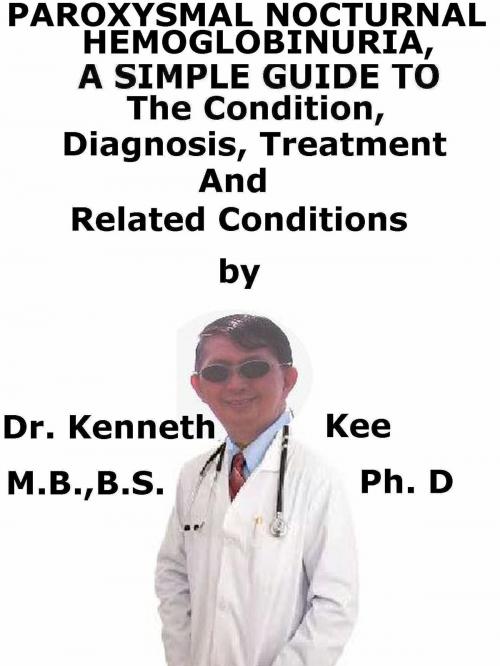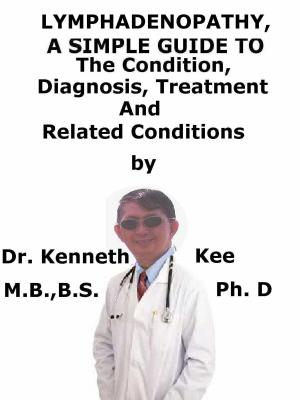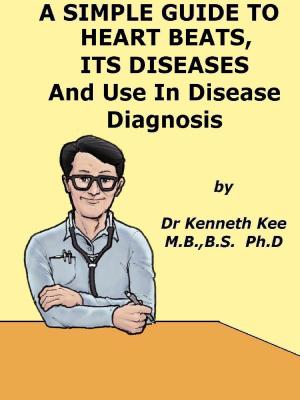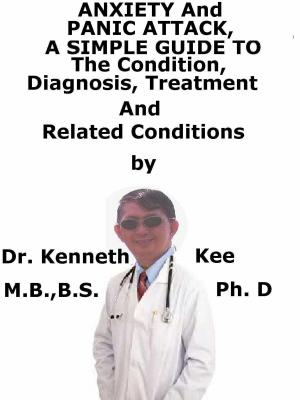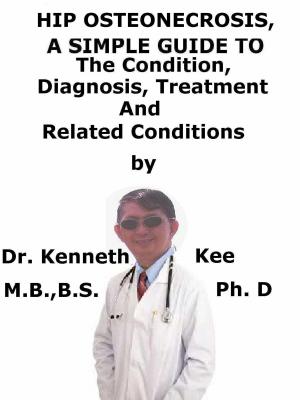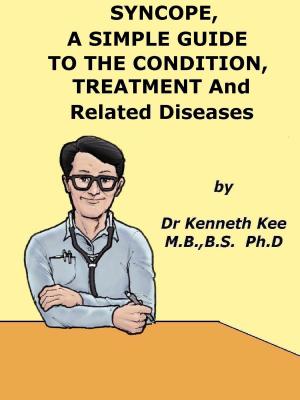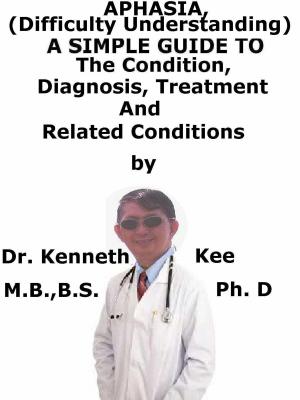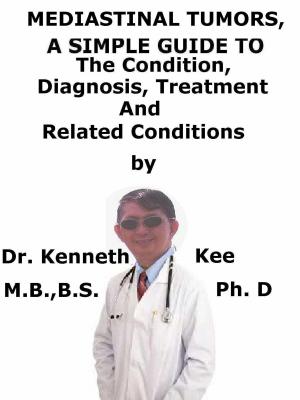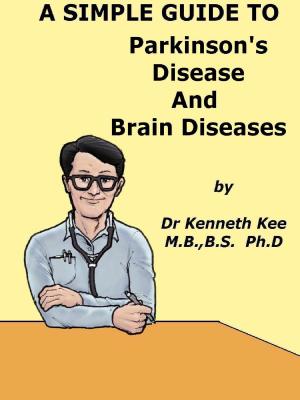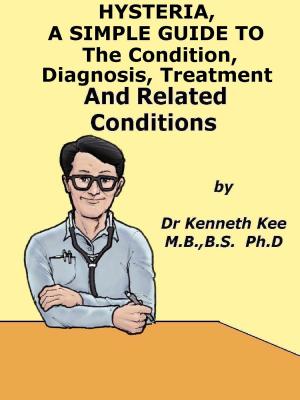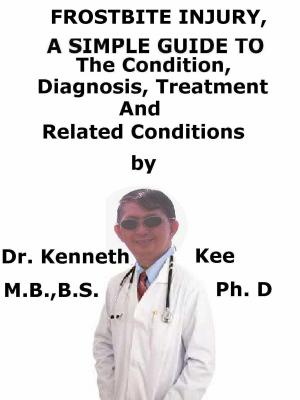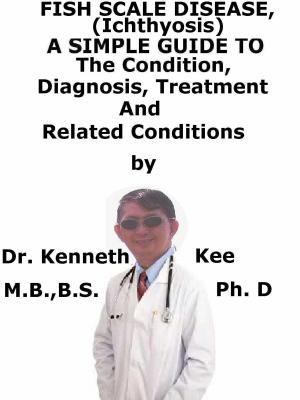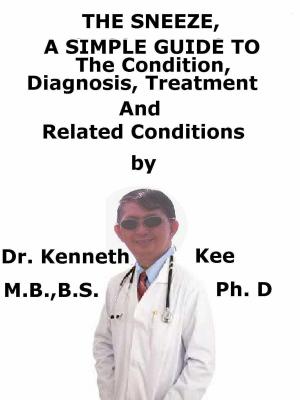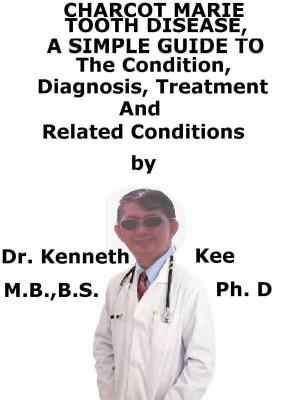Paroxysmal Nocturnal Hemoglobinuria, A Simple Guide To The Condition, Diagnosis, Treatment And Related Conditions
Nonfiction, Health & Well Being, Medical, Specialties, Internal Medicine, Hematology, Health, Ailments & Diseases, Genetic| Author: | Kenneth Kee | ISBN: | 9781370465910 |
| Publisher: | Kenneth Kee | Publication: | March 11, 2018 |
| Imprint: | Smashwords Edition | Language: | English |
| Author: | Kenneth Kee |
| ISBN: | 9781370465910 |
| Publisher: | Kenneth Kee |
| Publication: | March 11, 2018 |
| Imprint: | Smashwords Edition |
| Language: | English |
This book describes Paroxysmal Nocturnal Hemoglobinuria, Diagnosis and Treatment and Related Diseases
Paroxysmal nocturnal hemoglobinuria is a rare genetic disorder in which the red blood cells break down faster than normal.
There are 3 features of paroxysmal nocturnal hemoglobinuria (PNH) that are most infrequent together and the finding of them all is diagnostic:
- Hemolytic anemia
- Thromboses
- Pancytopenia
Causes
People with this disease have blood cells that are missing a gene called PIG-A.
This gene permits a substance called glycosyl-phosphatidylinositol (GPI) to assist certain proteins to stick to cells.
Without PIG-A, vital proteins cannot attach to the cell surface and shield the cell from substances in the blood called complement.
As a result, red blood cells collapse too early.
The red cells seep out hemoglobin into the blood, which can excrete into the urine.
This can occur at any time, but tends more likely to occur during the night or early morning.
The disease can involve people of any age.
It may be linked with aplastic anemia, myelodysplastic syndrome, or acute myelogenous leukemia.
The word 'paroxysmal' is an incorrect description: hemolysis truly happens all day but the more concentrated urine at night makes it occur darker and the hemoglobinuria is more apparent.
In PNH there is a noticeable deficiency or absence of the complement regulatory proteins CD55 and CD59.
PNH is due to hematopoietic stem cell mutation deficiency of the PIGA gene in the X chromosome
The gene is not familial and sex distribution is equal.
Symptoms
1.Abdominal pain
2.Back pain
3.Blood clots,
4.Dark urine,
5.Easy bruising or bleeding
6.Headache
7.Shortness of breath
PNH can occur any time from early childhood to quite late in life.
Physical signs are:
1.Anemia will produce pallor.
2.Infections may cause fever and purpura may be obvious.
3.The Budd-Chiari syndrome will cause hepatomegaly and ascites.
4.There may be splenomegaly too.
5.Ischemia of the gut induces absent bowel sounds.
6.Cerebral vein thrombosis can cause papilloedema and other neurological signs.
7.Red, painful nodules may happen in the skin.
Diagnosis
Red and white blood cell counts and platelet counts may be reduced.
Red or brown urine indicates the breakdown of red blood cells and that hemoglobin is being released into the body's circulation and ultimately into the urine.
The dipstick urine tests for blood will be positive but microscopy will not show red blood cells.
This is the difference between hematuria and hemoglobinuria.
FBC will reveal different degrees of anemia, normally of a normochromic, normocytic picture
White cells and platelets may be decreased
Bone marrow examination can make a distinction an erythroid and hyperplastic marrow during the hemolytic phase or a hypo-plastic marrow in the aplastic phase
Treatment
Blood transfusion may be needed but leukocyte depletion is required to decrease antibody formation exacerbating hemolysis.
There is a danger of meningococcal infection and so meningococcal vaccination is necessary.
Eculizumab
This medicine is a humanized monoclonal antibody that binds and stops the stimulation of complement C5 and the later formation of the cytolytic membrane attack the complement complex.
It decreases intravascular hemolysis and hemoglobinuria, stabilizes hemoglobin concentration and lessens the need for transfusion.
Long-term safety and efficacy of eculizumab have been proven in studies
The treatment of acute thrombotic events needs immediate anticoagulation starting with heparin and beginning eculizumab
Blood transfusions and Steroids may help RBC replacement
Allogeneic bone marrow transplant can cure classic PNH
TABLE OF CONTENT
Introduction
Chapter 1 Paroxysmal Nocturnal Hemoglobinuria
Chapter 2 Causes
Chapter 3 Symptoms
Chapter 4 Diagnosis
Chapter 5 Treatment
Chapter 6 Prognosis
Chapter 7 Aplastic Anemia
Chapter 8 Hemolytic Anemia
Epilogue
This book describes Paroxysmal Nocturnal Hemoglobinuria, Diagnosis and Treatment and Related Diseases
Paroxysmal nocturnal hemoglobinuria is a rare genetic disorder in which the red blood cells break down faster than normal.
There are 3 features of paroxysmal nocturnal hemoglobinuria (PNH) that are most infrequent together and the finding of them all is diagnostic:
- Hemolytic anemia
- Thromboses
- Pancytopenia
Causes
People with this disease have blood cells that are missing a gene called PIG-A.
This gene permits a substance called glycosyl-phosphatidylinositol (GPI) to assist certain proteins to stick to cells.
Without PIG-A, vital proteins cannot attach to the cell surface and shield the cell from substances in the blood called complement.
As a result, red blood cells collapse too early.
The red cells seep out hemoglobin into the blood, which can excrete into the urine.
This can occur at any time, but tends more likely to occur during the night or early morning.
The disease can involve people of any age.
It may be linked with aplastic anemia, myelodysplastic syndrome, or acute myelogenous leukemia.
The word 'paroxysmal' is an incorrect description: hemolysis truly happens all day but the more concentrated urine at night makes it occur darker and the hemoglobinuria is more apparent.
In PNH there is a noticeable deficiency or absence of the complement regulatory proteins CD55 and CD59.
PNH is due to hematopoietic stem cell mutation deficiency of the PIGA gene in the X chromosome
The gene is not familial and sex distribution is equal.
Symptoms
1.Abdominal pain
2.Back pain
3.Blood clots,
4.Dark urine,
5.Easy bruising or bleeding
6.Headache
7.Shortness of breath
PNH can occur any time from early childhood to quite late in life.
Physical signs are:
1.Anemia will produce pallor.
2.Infections may cause fever and purpura may be obvious.
3.The Budd-Chiari syndrome will cause hepatomegaly and ascites.
4.There may be splenomegaly too.
5.Ischemia of the gut induces absent bowel sounds.
6.Cerebral vein thrombosis can cause papilloedema and other neurological signs.
7.Red, painful nodules may happen in the skin.
Diagnosis
Red and white blood cell counts and platelet counts may be reduced.
Red or brown urine indicates the breakdown of red blood cells and that hemoglobin is being released into the body's circulation and ultimately into the urine.
The dipstick urine tests for blood will be positive but microscopy will not show red blood cells.
This is the difference between hematuria and hemoglobinuria.
FBC will reveal different degrees of anemia, normally of a normochromic, normocytic picture
White cells and platelets may be decreased
Bone marrow examination can make a distinction an erythroid and hyperplastic marrow during the hemolytic phase or a hypo-plastic marrow in the aplastic phase
Treatment
Blood transfusion may be needed but leukocyte depletion is required to decrease antibody formation exacerbating hemolysis.
There is a danger of meningococcal infection and so meningococcal vaccination is necessary.
Eculizumab
This medicine is a humanized monoclonal antibody that binds and stops the stimulation of complement C5 and the later formation of the cytolytic membrane attack the complement complex.
It decreases intravascular hemolysis and hemoglobinuria, stabilizes hemoglobin concentration and lessens the need for transfusion.
Long-term safety and efficacy of eculizumab have been proven in studies
The treatment of acute thrombotic events needs immediate anticoagulation starting with heparin and beginning eculizumab
Blood transfusions and Steroids may help RBC replacement
Allogeneic bone marrow transplant can cure classic PNH
TABLE OF CONTENT
Introduction
Chapter 1 Paroxysmal Nocturnal Hemoglobinuria
Chapter 2 Causes
Chapter 3 Symptoms
Chapter 4 Diagnosis
Chapter 5 Treatment
Chapter 6 Prognosis
Chapter 7 Aplastic Anemia
Chapter 8 Hemolytic Anemia
Epilogue
